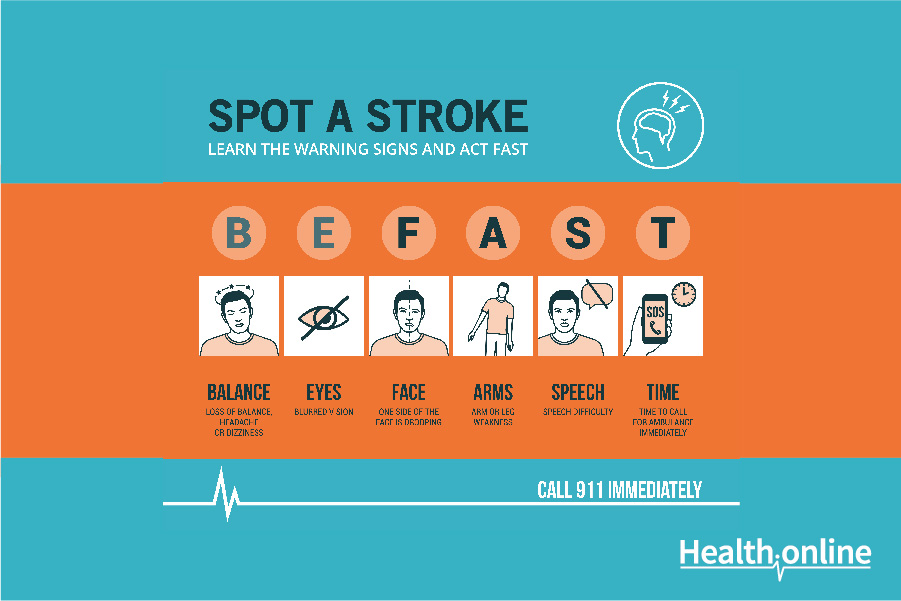
Symptoms of Stroke
How do you know if you are having a stroke? A sudden and severe headache which occurs for no reason is one of the most common signs. That headache may be telling you that a clot has cut off blood flow or an aneurism has burst. If in doubt and especially if you are at a particular risk for stroke, a sudden, bad headache is a good reason to seek medical attention.
Other symptoms that point to a stroke are loss of vision in one or both eyes, sudden and inexplicable weakness in the face, arms, and/or legs, inexplicable numbness, confusion, difficulty processing the conversation of those around you, and difficulty speaking and making yourself understood to those around you.
Unfortunately, a stroke can cause such disorientation that the stroke victim is his or herself not capable of taking immediate and appropriate action. Friends and family members need to know if you are at risk. They also need to know the signs of a stroke.
Time is of the essence in minimizing the worst possible effects of stroke. That’s why medical professionals have developed a set of criteria for the layman who suspects his friend or loved one is having a stroke. The easy-to-remember acronym for this stroke test is F.A.S.T.
- F stands for face . If you think someone is having a stroke, ask him or her to smile. Then look for drooping on one side of the face. If there is a droop, do NOT wait to complete the assessment before calling for help. Call 911 immediately and complete the assessment while on the phone. Remember, the time between a stroke and treatment can make a critical difference in whether the victim gets stuck with a severe lifetime disability.
- A stands for arms. You will need to ask the person you suspect of stroke to raise both his arms in the air. Does one arm drift down, seemingly without the patient’s consent? If so, that is a symptom of stroke.
- S stands for speech . Ask the suspected stroke victim to repeat a short, easy phrase like, “My dog has four legs.” Listen carefully to his or her speech. Is it blurred, unclear, or unlike the way he or she usually talks? If so, this is likely a stroke symptom.
- T stands for time. Anything you can do to minimize the time it takes to get the patient to the ambulance and from there to the hospital will improve his or her chances for a normal life following stroke. Because of the way some cell phone towers bounce mobile calls around, it may be better to use a landline to call 911 if a landline is immediately available. If you are away from a landline, remember that even a mobile phone with no service can be used to call 911. Mobile phone providers are obliged by law to connect 911 calls. For that reason even people who have held out against cell phones should have a fully-charged dud phone in their car to make emergency calls. Make sure elderly parents and grandparents have a phone with them while driving.
As a general rule stroke victims need to receive appropriate medications within three hours of the stroke and surgery if needed within four and a half hours. Failure to meet these deadlines could mean severe disability or death.
It is important to tell the patient’s doctor all of the stroke symptoms you have noticed in your friend or loved one. Your accurate report on signs will help medical professionals make a good diagnosis and follow up plan.
Sometimes, stroke symptoms clear up after a few minutes. The patient and family may think it was a false alarm. But chances are good that this incident was a TIA (transient ischemic attack). In a TIA, blood flow to the brain is restored before causing a full-blown stroke. People who have one or more TIAs are at extremely high risk of developing a disabling stroke and should get medical attention immediately. Sometimes blood thinners can prevent future problems.




